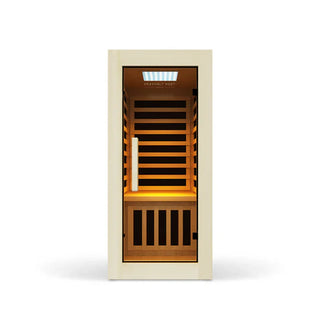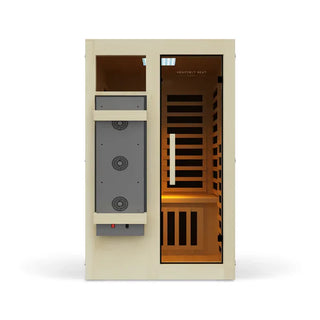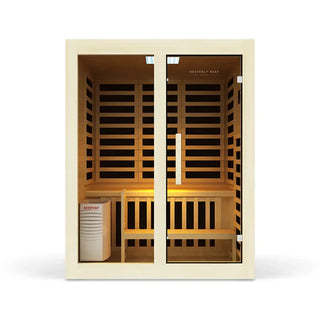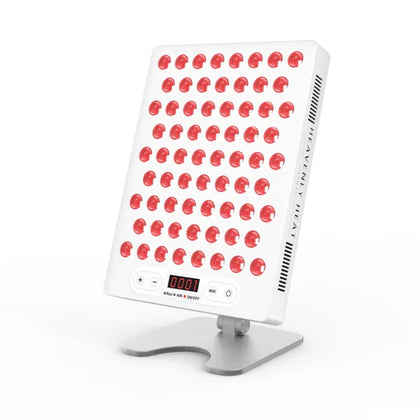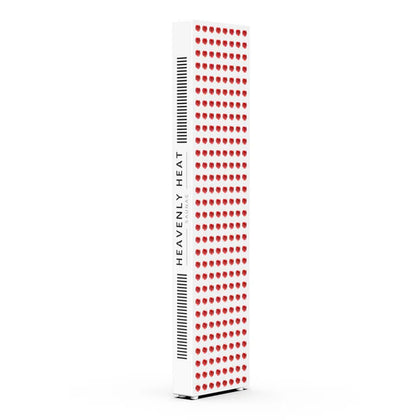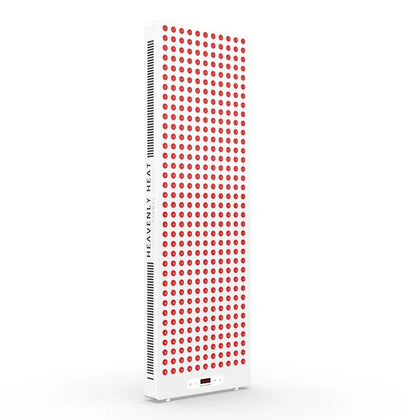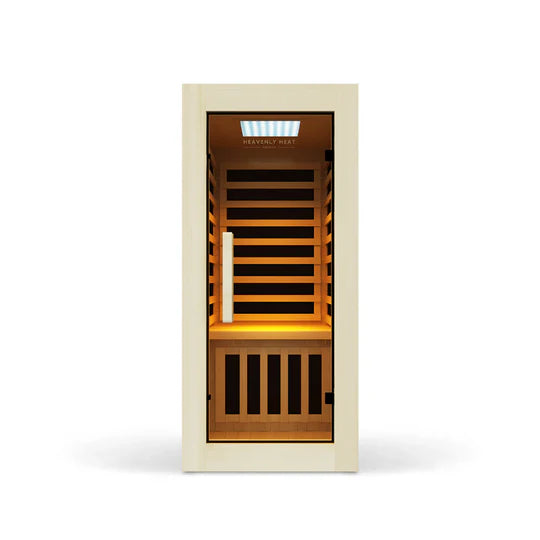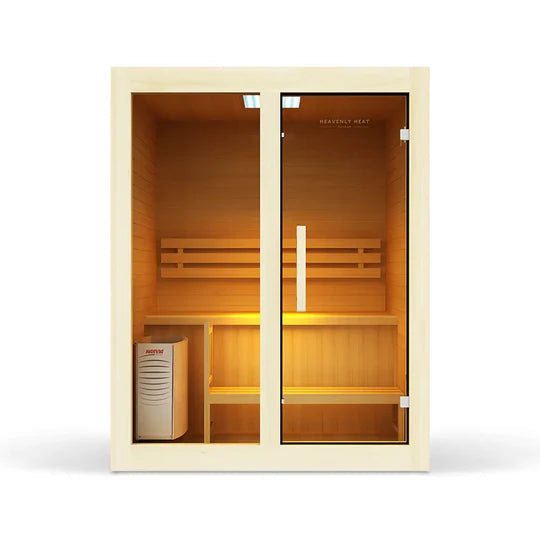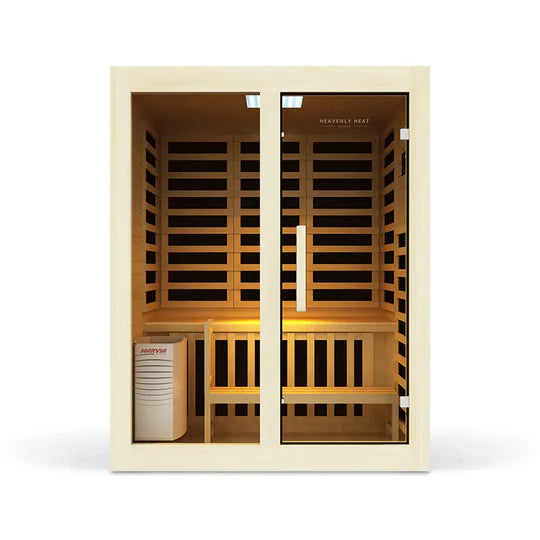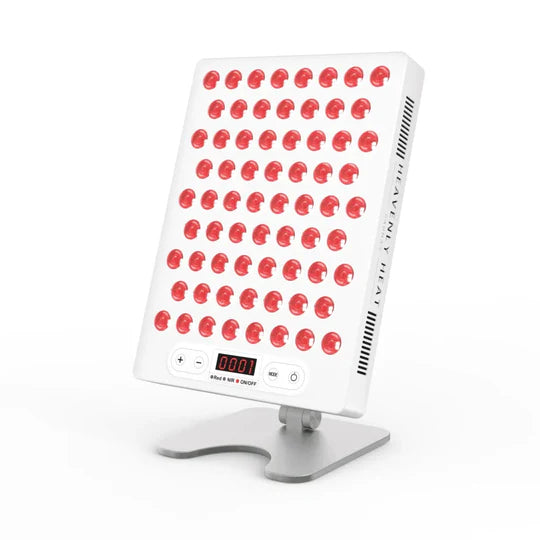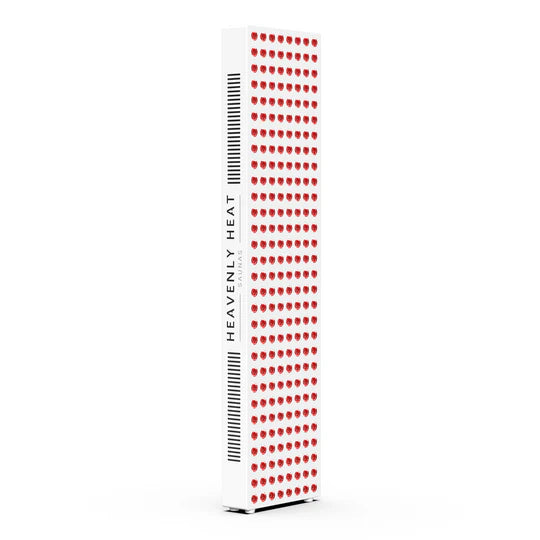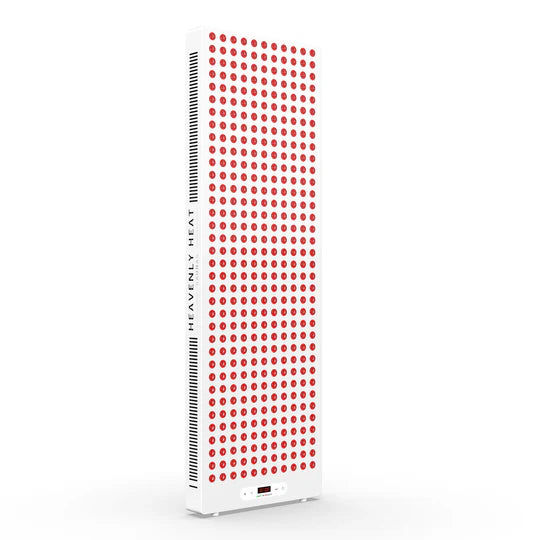How to Effectively Use Red Light Therapy for Migraines?
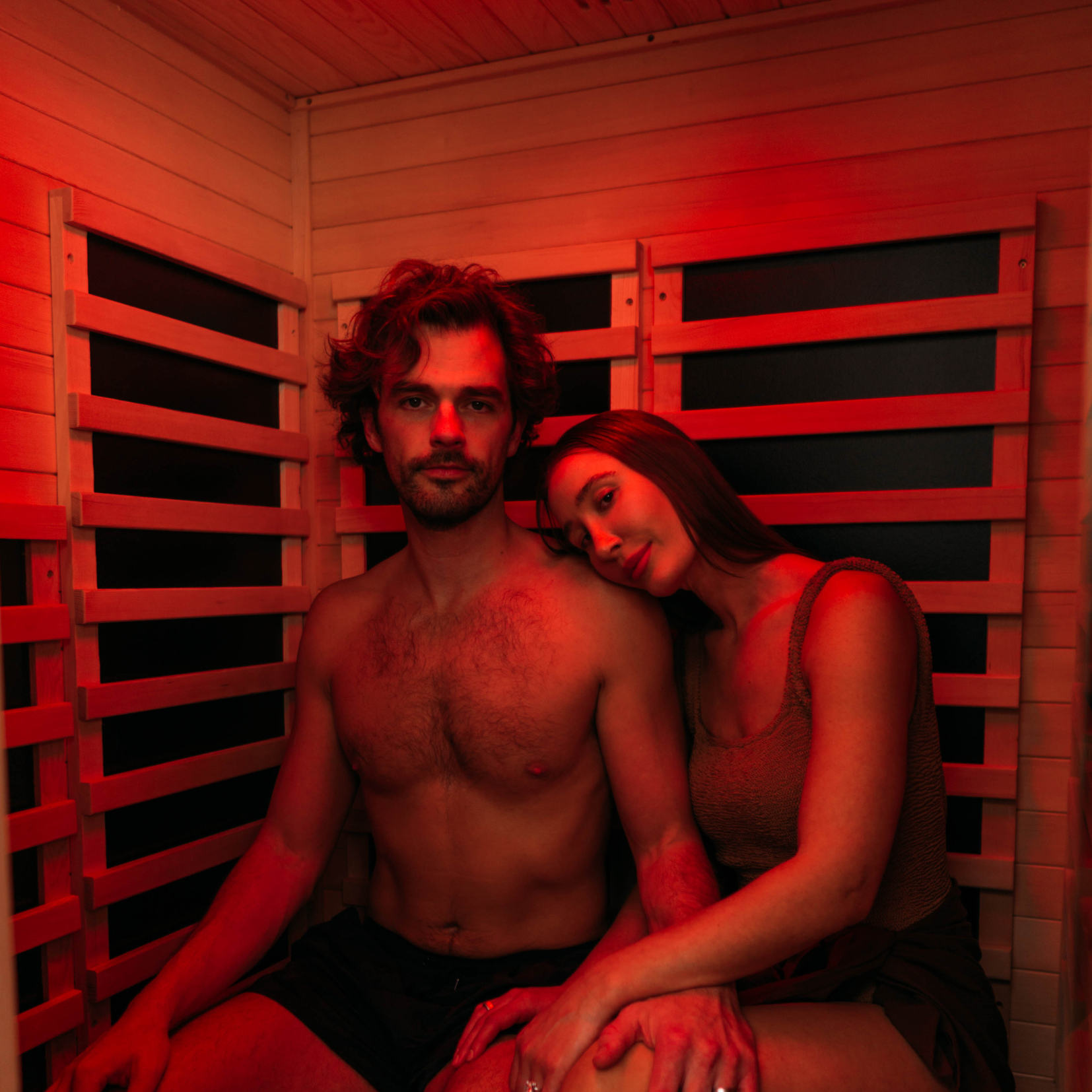
Red light therapy is known for promoting skin health, reducing inflammation, and enhancing muscle recovery, but can it help with migraines?
With over a billion people worldwide affected by migraines each year, especially young adults and women, these painful, recurring headaches are both prevalent and disruptive.
Thankfully, red light therapy offers a promising solution. In this guide, discover how to use red light therapy effectively to ease migraines and improve your quality of life.
Table of contents
Understanding Migraines
University of California Davis Health experts clarify that migraines are not just headaches but a complex neurological syndrome that affects around 15% of Americans, three times more common in women. The condition arises from nerve-driven inflammation of the dura, the protective layer between the brain and the skull, which leads to throbbing pain, often on one side of the head.
Several primary causes contribute to migraines:
Hormonal fluctuations : Especially around menstruation due to dropping estrogen levels.
Genetic predisposition : Family history may increase susceptibility.
Environmental triggers : Cold weather fronts and changes in barometric pressure.
Lifestyle factors : Stress, alcohol consumption, and lack of sleep can prompt attacks.
Dietary habits : Certain foods or skipped meals may also be associated.
Migraine symptoms can be debilitating, ranging from nausea, sensitivity to light and sound, to visual disturbances and even speech difficulties.
These episodes can disrupt work, relationships, and daily function. While medication such as triptans and NSAIDs may offer relief, lifestyle-focused strategies like consistent sleep, stress management (e.g., yoga or meditation), and preventive treatments like Botox or injectables (e.g., Aimovig) provide long-term hope.
Though chronic for many, migraines can often be managed effectively with the right combination of medical care and self-care.
The Science Behind Red Light Therapy and Migraines
Researchers are starting to discover how red light therapy could help people who struggle with migraines.
One study looked at people with chronic headaches linked to jaw tension and muscle pain. After using an infrared red light on the sore spots of their face, their pain dropped by 64%.
Their blood flow slowed down in a good way, and their serotonin levels, the feel-good chemical in the brain, went up.
That’s a big deal because serotonin plays a key role in how we feel pain. Another review showed that red light placed on the skin can lower nerve pain, but when people look directly at red light, it might make migraines worse.
Strangely enough, green light seems to do the opposite, it can actually reduce migraine pain. So, while red light therapy shows real promise, how and where you use it matters a lot. These early studies give hope that light could become a safe, drug-free way to ease migraine pain.
How the Benefits of Red Light Therapy Combat Migraines
Improve sleep quality
Good sleep can reduce migraines, and red light therapy (RLT) may support this. In one study, researchers gave elite Chinese female basketball players 30 minutes of red light exposure nightly for 14 days.
They found that RLT significantly improved the players’ sleep quality and boosted melatonin, a hormone essential for restful sleep. This non-invasive approach may help reduce migraine frequency by enhancing sleep quality.
Improve blood circulation
- Good blood flow can help reduce migraine pain: Improved blood circulation plays a key role in easing migraine symptoms. Red light therapy helps by boosting the flow of oxygen and nutrients to the brain, which may lower how often and how severely migraines happen.
- Red light therapy helps open up your blood vessels: This type of therapy works by widening blood vessels, making it easier for blood to reach the brain. Better blood flow means your brain gets more of what it needs to function properly, which can help with migraine relief.
- A specific red light (670 nm) supports better blood flow: A study found that using 670 nm red light helps relax and open up blood vessels. This happens because the light encourages the release of helpful substances that tell the vessels to widen and improve circulation.
- Your body releases helpful signals when exposed to red light: The same study showed that red light causes tiny particles in your body to carry special molecules (called RSNO). These molecules help relax the walls of your blood vessels, which supports smoother and more efficient blood flow.
Relieves Muscle Tension
- Tight muscles in your neck and shoulders can make migraines worse: Tension in the head, neck, and shoulder muscles is a common trigger for migraine pain. When these muscles stay tight, they can increase the frequency and intensity of migraines.
- Red light therapy helps relax those tight muscles: Using red light therapy can calm and loosen tense muscles. This can ease pressure in areas that often lead to migraine discomfort.
- It also brings down inflammation that causes pain: Red light therapy doesn’t just relax muscles, it also reduces swelling and irritation in the muscles, which helps relieve pain linked to migraines.
- Studies show it speeds up muscle healing and recovery: In research with identical twins, red light therapy was shown to reduce muscle damage and improve recovery after workouts. This proves its ability to support muscle health and reduce tension.
Promotes Mitochondrial Function
- Better mitochondria can help reduce migraines: Mitochondria play a key role in keeping the brain healthy and reducing inflammation, which are both important in managing migraine symptoms. When your cells produce energy more efficiently, your brain is better supported.
- Red light helps your cells make more energy: Red light therapy boosts how well mitochondria work. This means your cells can produce more energy, which may help your brain recover faster and lower migraine pain.
- Studies show red light boosts cell activity: A study by Yuki Umino and Mitsuhiro Denda found that exposing skin cells to red light for two hours increased both cell growth and mitochondrial activity. This proves red light can energize your cells in a natural way.
- Using red light could give natural migraine relief: By supporting mitochondrial function and reducing inflammation, red light therapy could be a simple, drug-free option for people looking to ease migraine symptoms.
Helps Balance Serotonin Levels
- When serotonin is balanced, migraine pain can go down: Balancing serotonin levels plays a crucial role in easing migraines because serotonin helps control pain signals in the brain. When levels are stable, people often experience fewer and less intense headaches.
- Red light therapy may help the brain adjust serotonin naturally: Red light therapy (RLT) seems to support the brain in managing serotonin levels more effectively. This natural adjustment might help reduce how often and how strongly migraines show up.
- A study found more serotonin and much less pain after light therapy: In a study by Miriam Tomaz de Magalhães et a l ., published in Experimental Biology and Medicine, people with chronic headaches caused by jaw-related issues (TMD) received low-level laser therapy (a type of red light therapy). After the sessions, their serotonin levels went up, and their pain dropped by 64%.
- This could be a simple, drug-free way to feel better: Because red light therapy helps increase serotonin, it may offer a safe and natural option for managing migraines without relying on medication.
Other Therapies that help with Migraines
Acupuncture
If you struggle with migraines, acupuncture might be worth a try. This ancient practice uses tiny needles to gently target pressure points that help relax your body, calm your nerves, and improve blood flow, things that can ease migraine pain.
According to Pain Research and Management (2020), researchers looked at 15 reviews and found that acupuncture worked better than western medicine in reducing how often migraines happen, how bad they feel, and how often people needed painkillers. That’s real relief without relying only on medication.
Magnesium Supplementation
If you get migraines often, low magnesium levels might be part of the problem. Magnesium helps your brain stay calm, your nerves function smoothly, and your blood vessels stay relaxed.
When your body doesn’t have enough, it can cause brain overactivity, stress in your cells, and even a wave of nerve signals called cortical spreading depression, something that’s often linked to migraines with aura.
That’s why many people turn to magnesium supplements. According to Nutrients 2022, researchers believe magnesium may help prevent migraines by calming the brain and balancing chemicals. It’s a simple option that might make a real difference in how often you get headaches.
Essential Oils
If you’re looking for a natural way to calm a migraine, essential oils like lavender might actually help. Lavender oil works by relaxing your mind and body, easing stress, and lowering how much pain you feel.
When you breathe it in, it sends signals through your brain’s emotional center, helping you feel more at ease during a migraine.
A study published in European Neurology (2012) showed that people who inhaled lavender oil during a migraine had much better relief than those who didn’t.
Out of 129 migraine attacks, 92 improved with lavender. That’s a strong reason to give this soothing scent a try.
Yoga
Yoga and gentle stretching can calm your mind, relax tight muscles, and improve blood flow, three things that really help during a migraine.
These slow movements also ease stress, which is a big trigger for many people. In one study from the International Journal of Yoga (2014), people with migraines who added yoga to their regular treatment felt much better.
They had fewer and less painful headaches compared to those who didn’t do yoga. The yoga group also showed better heart and nervous system balance, which means their bodies handled stress more calmly.
Green Light Therapy
Green light therapy may seem unusual, but it works in a surprising way to ease migraine pain. By calming the brain’s sensory pathways, narrow band green light helps reduce the intensity of migraine attacks, ease light sensitivity, and even support better sleep.
In a large real-world study , 82% of migraine attacks treated with green light improved. Another trial found that daily green light use significantly reduced headache days in both chronic and episodic migraine sufferers. Even better, patients reported fewer symptoms without any side effects.
How to Effectively Use Red Light Therapy for Migraines?
Choose the Right Device
When selecting a red light therapy device, you have options: handheld devices , panels , and masks.
Handheld devices are portable and perfect for targeting specific areas , while panels can cover larger areas quickly.
Masks are designed for facial treatment . Choose based on your preference for ease of use and the area you want to treat.
Handheld devices are often recommended for migraines since they allow for targeted treatment .
Target the right area
To treat migraines effectively, focus on the forehead and temples , as these are common pain points.
It’s crucial to target these areas because they can help alleviate pain more directly. By concentrating the therapy on regions where migraine symptoms occur , you enhance the treatment’s effectiveness, allowing for quicker relief and minimizing discomfort .
Use correct wavelength
The optimal wavelength for treating migraines with red light therapy ranges from 600 to 900 nanometers.
This range penetrates the skin effectively, promoting healing and reducing inflammation. Using the correct wavelength ensures that the therapy reaches the right depth in your tissues, maximizing its potential benefits for migraine relief and overall wellness.
Prepare for the therapy
Before starting red light therapy, ensure your skin is clean and free from any creams or lotions.
Find a comfortable and quiet place where you can relax during the session. Take a moment to breathe deeply and ease into the experience.
Proper preparation can enhance your results , making the therapy session more effective and enjoyable as you focus on relieving migraine pain.
Protect Your Eyes
Protecting your eyes during red light therapy is essential because direct exposure to bright light can cause discomfort or damage.
Use protective eyewear specifically designed for this purpose to shield your eyes from excessive brightness.
This step ensures you can fully benefit from the therapy without worrying about eye strain , allowing you to relax and focus on alleviating your migraine symptoms.
Does green light therapy help with migraines?
- Green light may calm the brain and reduce migraine triggers: Green light therapy is a non-drug method that uses a certain shade of green light to soothe the brain. This calming effect may help reduce the things that trigger migraines.
- A recent study shows promising results for migraine sufferers: In 2024, Tsung-Wei Hou and his team studied how green light therapy affects people with chronic migraines. The results were encouraging.
- People had fewer migraines and felt better overall: Those who used green light therapy regularly had fewer migraines, and the pain wasn’t as strong. They also slept better and felt less anxious. There were almost no side effects.
- It looks helpful, but more research is still needed: While the early results are positive, scientists say more large studies are needed. This will help find out who benefits the most and how well it works for different types of migraines.
Conclusion
To effectively alleviate migraine pain, integrating red light therapy into your treatment plan could be a valuable strategy.
This therapy works by enhancing sleep quality, improving blood circulation, relieving muscle tension, and balancing serotonin levels, all of which are vital in reducing migraine frequency and intensity.
To maximize the benefits, ensure you select the right device, target the appropriate areas, and use the correct wavelengths during therapy sessions.
As you explore red light therapy, approach it mindfully and consider its potential alongside other treatments.
By confidently incorporating this non-invasive therapy into your health regimen, you can take proactive steps toward better migraine management and improved overall well-being.


